

The magazine of the photo-essay

May 2018 issue


“A free, really high quality photo-essay magazine. Fabulous!”
Stephen Fry. British actor, writer and film maker
by Yamuna Flaherty
In the mountain kingdom of Ladakh, more startling than spotting an ibex climbing a rocky slope or the elusive snow
leopard making a rare appearance is encountering a group of Bihari migrant laborers on a 5000m high altitude pass.
Their willingness to travel far from home, to parts of India that are so contrary to where they originate from, to find work
and live in deplorable conditions is rather remarkable. Situated in the north, Bihar is a subtropical plain drained by the
Ganges river and is prone to severe monsoonal flooding. Ladakh, on the other hand, is a breathless, desolate land of
impenetrable Himalayan ranges, with sparse vegetation and an abundance of snow. Yet it is here that these brave souls
endure the extreme conditions in search of their livelihood.
If you make reference to a ‘Bihari’, a person originating from the state of Bihar, it doesn’t dredge up deeply ingrained
stereotypes from the depths of one’s subconscious; it merely skims them off the top of current social stigmas where they
seem to permanently reside. Despite Bihar being the land upon which Buddha attained enlightenment; where Nalanda,
the world’s oldest university, was established; and the place where Buddhism, Jainism, and Sikhism have their roots,
Biharis have a reputation for being unhygienic, uncivilized, and illiterate. Across India, it is not uncommon to find a Bihari
engaged in some form of back-breaking labor — from pulling rickshaws in Kolkata to building the country’s highest
roads in Jammu and Kashmir. Their struggles with prejudice, inequity, and classism often qualify them for only the lowest-
status jobs across the country.
There are 139 million internal migrants in India. With the increase of urbanization, poverty in rural areas, and a plethora
of agricultural issues, the country-wide migration of the labor class continues to drive the desperate to towns and cities
where there is available work for a better wage. The situation is complex for Biharis who wish to return: At home, many
still await road construction, electricity, and running water. Wages are low, opportunities are few, and inter-caste politics
limit the kinds of work Biharis can do without facing social boycott from their own people. Their circumstances have both
been determined by social discrimination and their own self-limiting concept of identity. In short, there has been little
social or economic progress to entice the migrants to return.
When I met this warm-hearted group of men carving a road into a hillside in Changtang, a part of the high altitude
Tibetan Plateau, I questioned why we humans are not doing more to build as many new narratives for ourselves as we
are highways. It is not merely Biharis that are in need of a new story. We as a species require a total paradigm shift if we
are to create a future where every single one of us has equal value. When we imprison an entire class, race, or group
of people in harmful stereotypes, we silence their stories, prevent them from success, and deny their agency to establish
their own unique identity in the world.
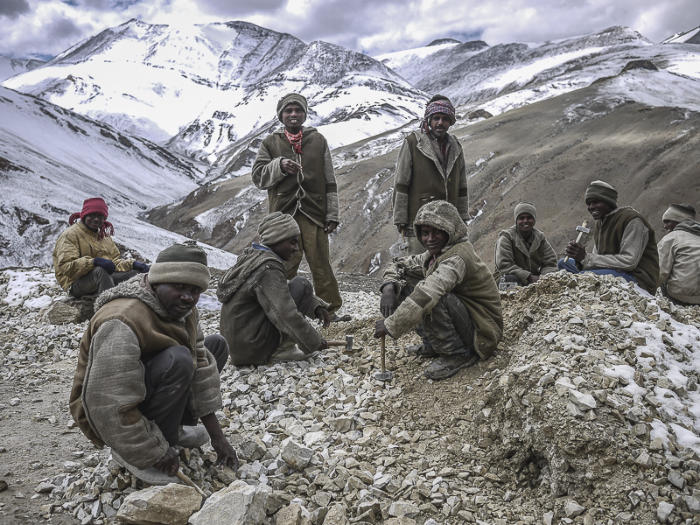
Bihari Migrant workers crush rocks on a portion of the highway connecting the regional capital, Leh, with the Changtang
Plateau.
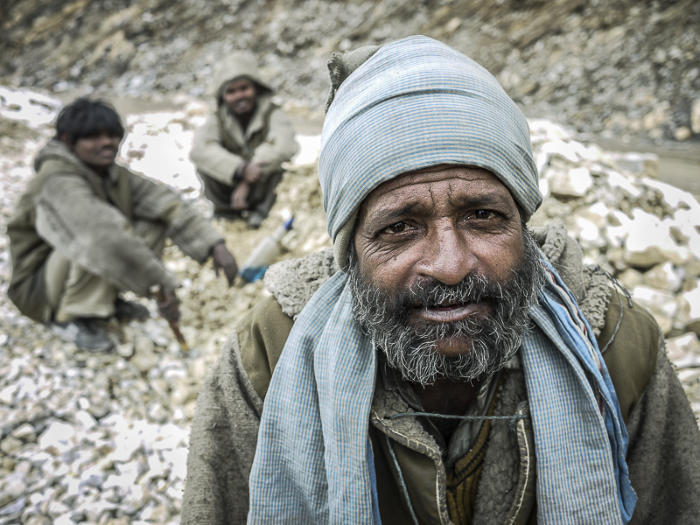
A weather-beaten road worker pauses for a photograph.
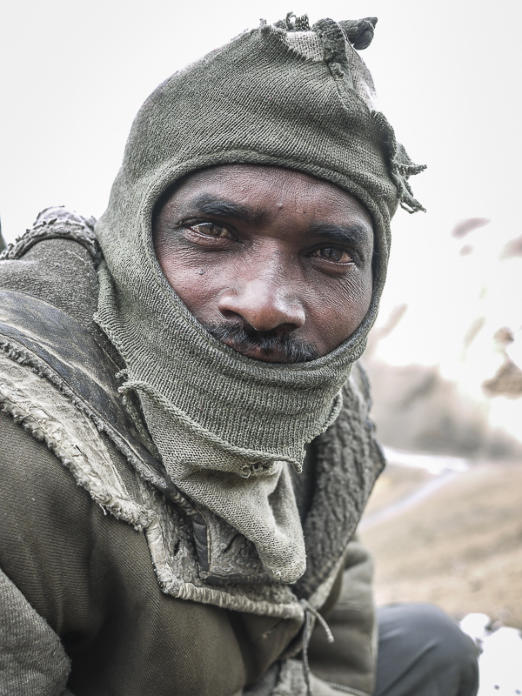
Labourers clothing often resembles that of the Indian army, with some of the clothing
being donated by the forces.
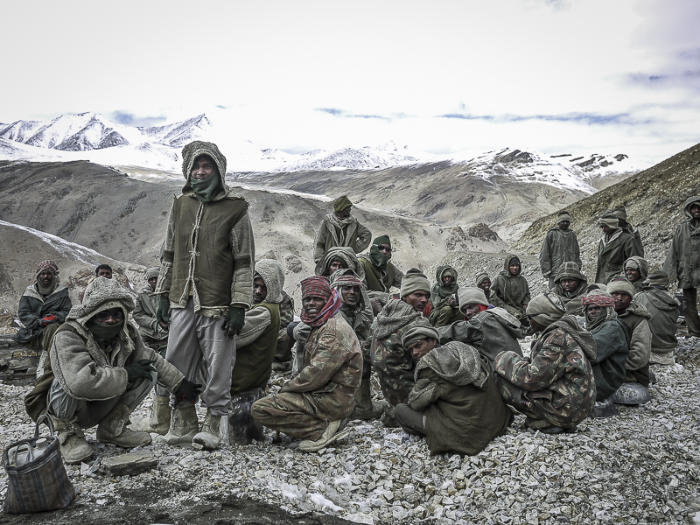
With roads built between 3,000 and 6.000m altitudes, the air is thin. Living at this height is most difficult for people from
the plains.
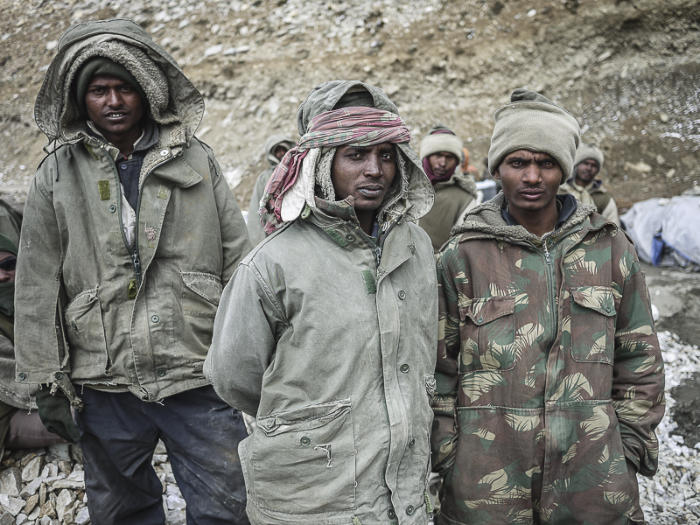
Young men wear a combination of military fatigues and local clothing from Bihar.
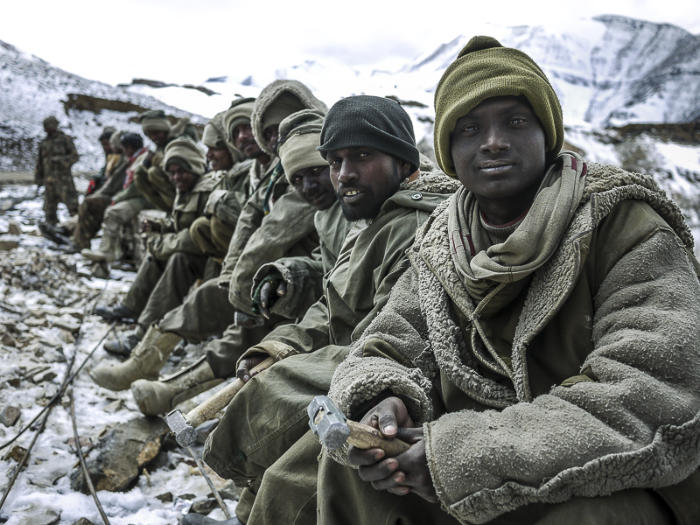
Bihari laborers line up for a break with their rudimentary tools in hand.
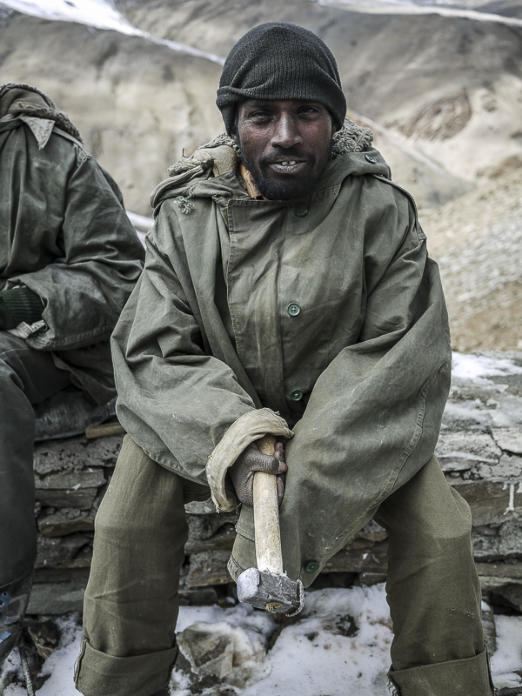
A young migrant wears an over-sized coat and no safety gear.
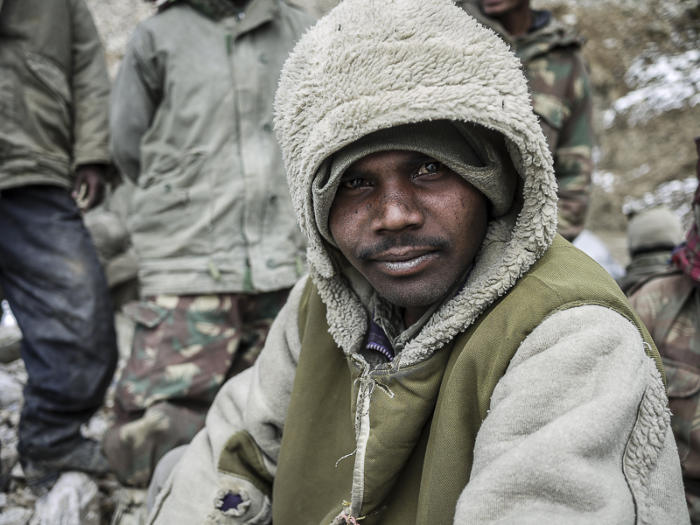
Days are long and wages are low. Road workers toil for 12 hours a day for roughly $10 USD, 6 days a week.
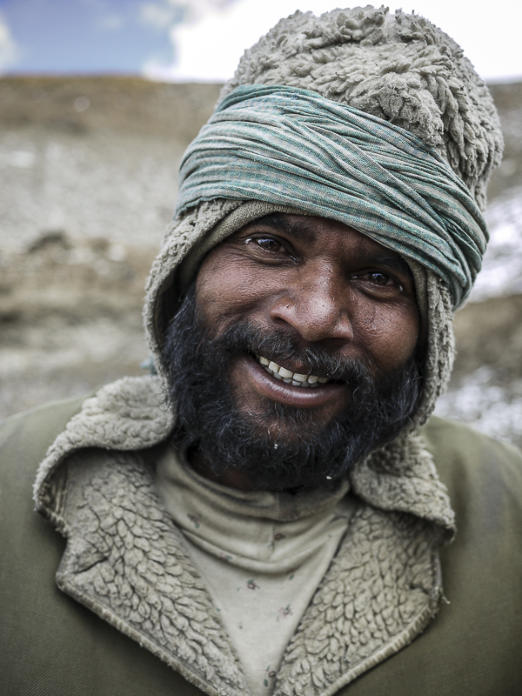
Despite the conditions, communal living and shared experience help keep the men’s
spirits high.
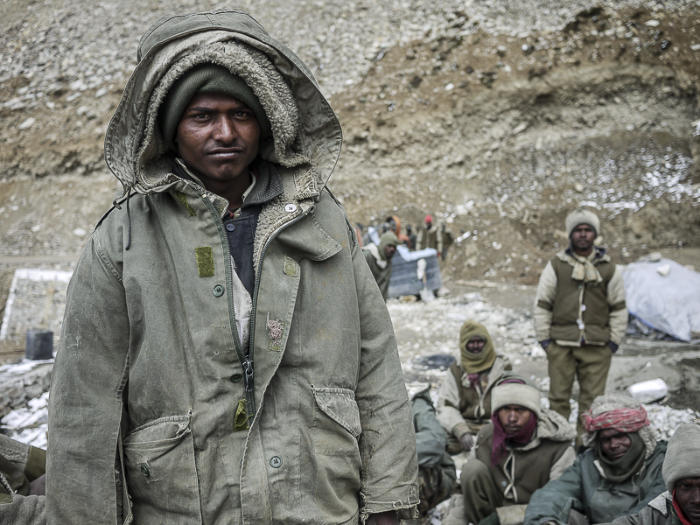
A young man wears several layers of clothing. Even in the middle of summer daytime temperatures can plummet at such
high altitudes.
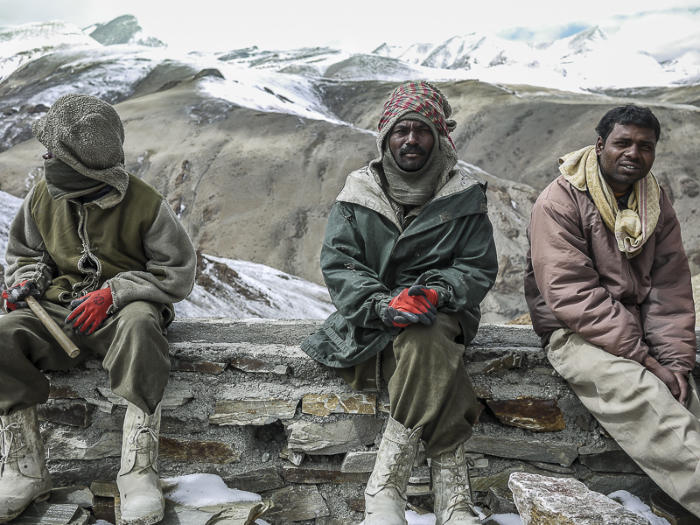
Migrant workers build roads in Ladakh between May and October every year when the weather is warmer. Although at
these altitudes summer snowfall is not uncommon.
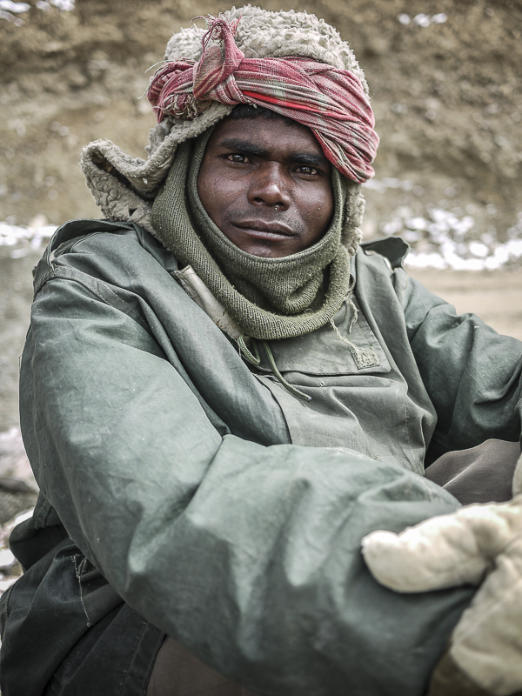
A laborer wears a gamucha tied around his head. These thin, coarse towels are generally
used for wiping the sweat off of one’s brow in subtropical Bihar.
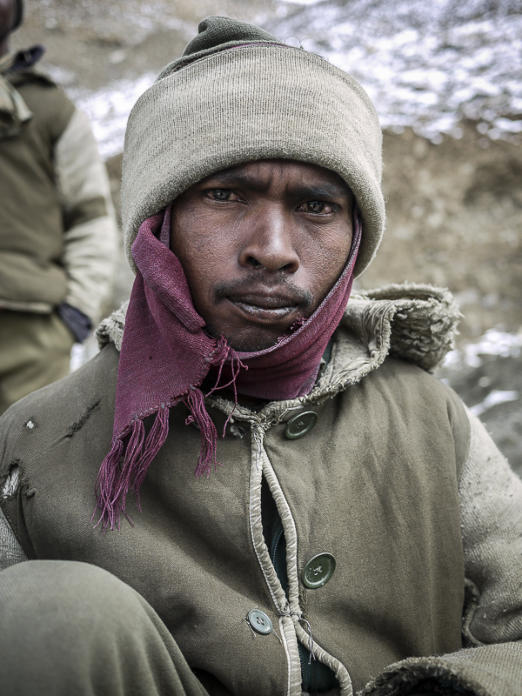
A young Bihari covers his ears with his gamucha, literally ‘sweat towel’.
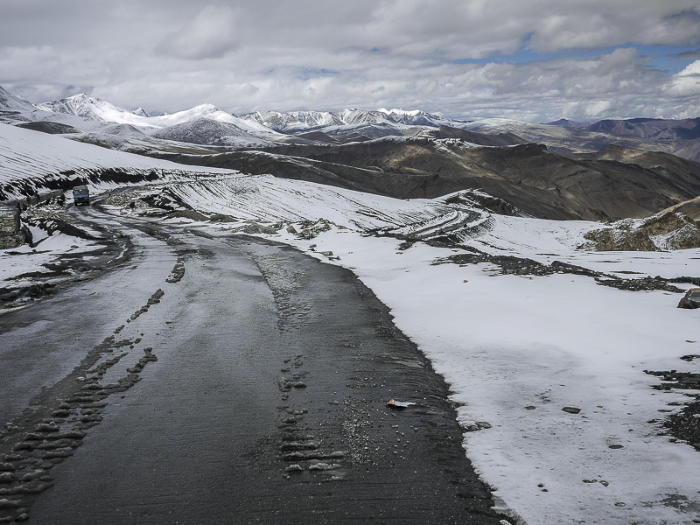
On the roof of the world, the scenery is breathtaking.
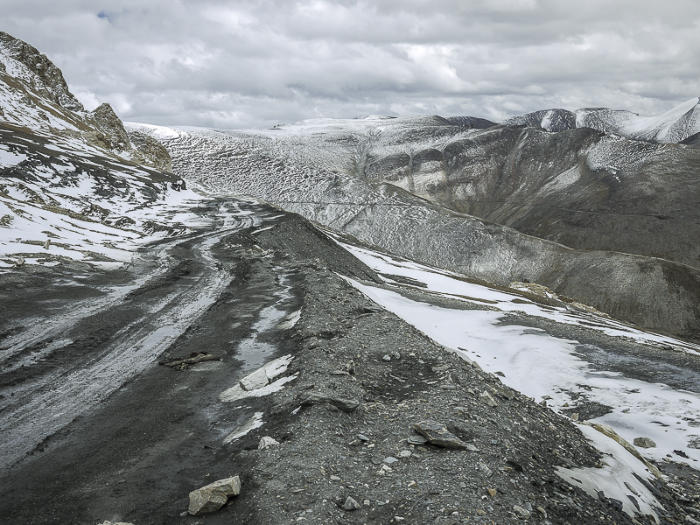
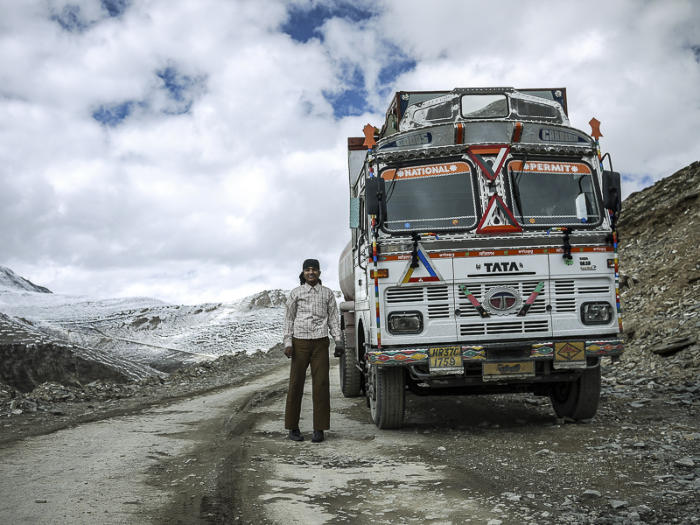
The high-altitude highway in the midst of construction.
Himalayan roads are used for military transport, tourism, and local traffic.











